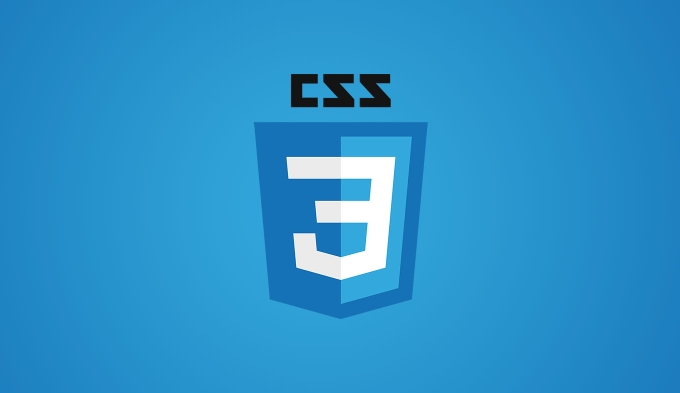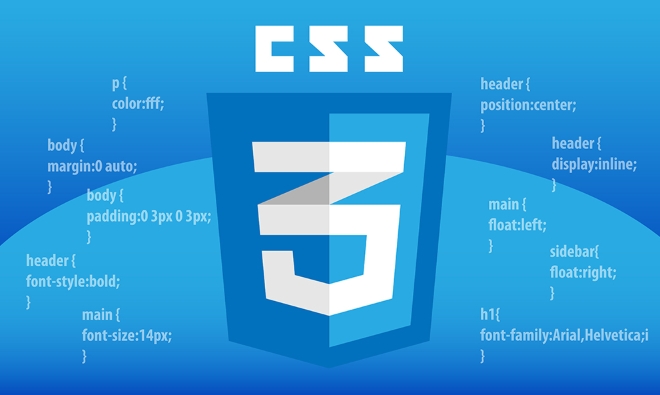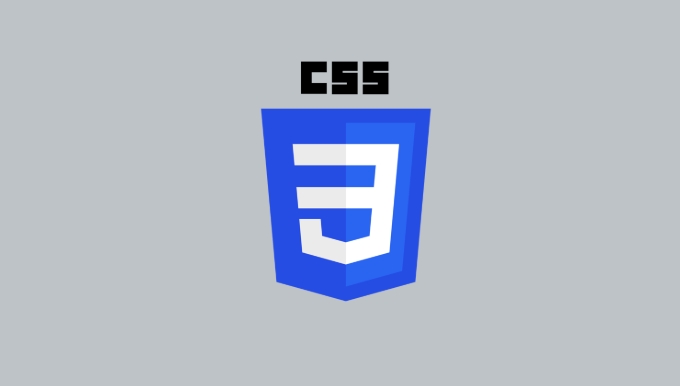How to create a parallax scrolling effect CSS tutorial
Jul 04, 2025 am 02:43 AMThe key to making parallax scrolling effect is to make elements of different layers scroll at different speeds. 1. First, build a multi-layer HTML structure, including background, medium scene and foreground, and use CSS to set the container overflow: hidden and absolute positioning; 2. Then listen to scroll events through JavaScript, use transform: translateY() to dynamically adjust the positions of each layer. The background layer scrolls slowly and the medium scene is slightly faster; 3. Finally, optimize performance, use throttling functions to control the scrolling frequency, compress image resources, and adapt to the mobile terminal, and consider pure CSS solutions to improve compatibility.

It is actually not difficult to do parallax scrolling effect, it can be done with CSS and a little HTML structure. The core is to allow elements of different layers to roll at different speeds to create a three-dimensional sense. Let me tell you how to do it.

1. Basic structure: Multi-layer layout is the key
The basis of parallax scrolling is to divide the page into multiple "layers", such as background, medium shot, and foreground. The scrolling speed of each layer is different, and it looks layered.

The HTML structure can be written like this:
<div class="parallax"> <div class="background"></div> <div class="midground"></div> <div class="foreground"></div> </div>
Then set overflow: hidden and fixed height for .parallax , and the content inside is hidden beyond the part. Each layer covers the entire container with absolute positioning, which facilitates control of scrolling behavior.

2. CSS realizes scrolling speed difference
The core of parallax is to make certain elements scroll slowly or faster than the page. The easiest way is to use transform: translateY() with scrolling events to dynamically adjust the position.
Here is a basic idea (controlled with JavaScript):
window.addEventListener('scroll', function () {
const scroll = window.scrollY;
document.querySelector('.background').style.transform = `translateY(${scroll * 0.5}px)`;
document.querySelector('.midground').style.transform = `translateY(${scroll * 0.8}px)`;
});- The background layer moves slowly (multiply 0.5), and looks farther
- Medium view is slightly faster (multiple 0.8)
- The prospects can be changed or simply remain unchanged
Transparency or scaling can also be set according to the page scrolling ratio to enhance the visual effect.
3. Optimization experience: Don't forget performance and compatibility
Although parallax scrolling looks good, it will stutter if it is not handled well, especially on mobile phones.
A few suggestions:
- Try to use
transformandopacityattributes that will not trigger reordering - Add a throttle function (throttle) to the scroll monitor to avoid frequent triggering
- The image resources should be compressed, and it is best to use
background-size: coverto ensure that it can adapt to various screens. - Consider whether to disable complex animations on the mobile side to improve fluency
If it is just a simple effect, you can also try a pure CSS solution, such as using background-attachment: fixed to achieve the static background scrolling illusion.
Basically that's it. Parallax scrolling looks cool, but in fact the principle is not complicated. The key is that the details are handled in place, otherwise it will easily get stuck or visually confused.
The above is the detailed content of How to create a parallax scrolling effect CSS tutorial. For more information, please follow other related articles on the PHP Chinese website!

Hot AI Tools

Undress AI Tool
Undress images for free

Undresser.AI Undress
AI-powered app for creating realistic nude photos

AI Clothes Remover
Online AI tool for removing clothes from photos.

Clothoff.io
AI clothes remover

Video Face Swap
Swap faces in any video effortlessly with our completely free AI face swap tool!

Hot Article

Hot Tools

Notepad++7.3.1
Easy-to-use and free code editor

SublimeText3 Chinese version
Chinese version, very easy to use

Zend Studio 13.0.1
Powerful PHP integrated development environment

Dreamweaver CS6
Visual web development tools

SublimeText3 Mac version
God-level code editing software (SublimeText3)

Hot Topics
 CSS tutorial for creating loading spinners and animations
Jul 07, 2025 am 12:07 AM
CSS tutorial for creating loading spinners and animations
Jul 07, 2025 am 12:07 AM
There are three ways to create a CSS loading rotator: 1. Use the basic rotator of borders to achieve simple animation through HTML and CSS; 2. Use a custom rotator of multiple points to achieve the jump effect through different delay times; 3. Add a rotator in the button and switch classes through JavaScript to display the loading status. Each approach emphasizes the importance of design details such as color, size, accessibility and performance optimization to enhance the user experience.
 Addressing CSS Browser Compatibility issues and prefixes
Jul 07, 2025 am 01:44 AM
Addressing CSS Browser Compatibility issues and prefixes
Jul 07, 2025 am 01:44 AM
To deal with CSS browser compatibility and prefix issues, you need to understand the differences in browser support and use vendor prefixes reasonably. 1. Understand common problems such as Flexbox and Grid support, position:sticky invalid, and animation performance is different; 2. Check CanIuse confirmation feature support status; 3. Correctly use -webkit-, -moz-, -ms-, -o- and other manufacturer prefixes; 4. It is recommended to use Autoprefixer to automatically add prefixes; 5. Install PostCSS and configure browserslist to specify the target browser; 6. Automatically handle compatibility during construction; 7. Modernizr detection features can be used for old projects; 8. No need to pursue consistency of all browsers,
 Styling visited links differently with CSS
Jul 11, 2025 am 03:26 AM
Styling visited links differently with CSS
Jul 11, 2025 am 03:26 AM
Setting the style of links you have visited can improve the user experience, especially in content-intensive websites to help users navigate better. 1. Use CSS's: visited pseudo-class to define the style of the visited link, such as color changes; 2. Note that the browser only allows modification of some attributes due to privacy restrictions; 3. The color selection should be coordinated with the overall style to avoid abruptness; 4. The mobile terminal may not display this effect, and it is recommended to combine it with other visual prompts such as icon auxiliary logos.
 Creating custom shapes with css clip-path
Jul 09, 2025 am 01:29 AM
Creating custom shapes with css clip-path
Jul 09, 2025 am 01:29 AM
Use the clip-path attribute of CSS to crop elements into custom shapes, such as triangles, circular notches, polygons, etc., without relying on pictures or SVGs. Its advantages include: 1. Supports a variety of basic shapes such as circle, ellipse, polygon, etc.; 2. Responsive adjustment and adaptable to mobile terminals; 3. Easy to animation, and can be combined with hover or JavaScript to achieve dynamic effects; 4. It does not affect the layout flow, and only crops the display area. Common usages are such as circular clip-path:circle (50pxatcenter) and triangle clip-path:polygon (50%0%, 100 0%, 0 0%). Notice
 What is the difference between display: inline, display: block, and display: inline-block?
Jul 11, 2025 am 03:25 AM
What is the difference between display: inline, display: block, and display: inline-block?
Jul 11, 2025 am 03:25 AM
Themaindifferencesbetweendisplay:inline,block,andinline-blockinHTML/CSSarelayoutbehavior,spaceusage,andstylingcontrol.1.Inlineelementsflowwithtext,don’tstartonnewlines,ignorewidth/height,andonlyapplyhorizontalpadding/margins—idealforinlinetextstyling
 What is the CSS Painting API?
Jul 04, 2025 am 02:16 AM
What is the CSS Painting API?
Jul 04, 2025 am 02:16 AM
TheCSSPaintingAPIenablesdynamicimagegenerationinCSSusingJavaScript.1.DeveloperscreateaPaintWorkletclasswithapaint()method.2.TheyregisteritviaregisterPaint().3.ThecustompaintfunctionisthenusedinCSSpropertieslikebackground-image.Thisallowsfordynamicvis
 How to create responsive images using CSS?
Jul 15, 2025 am 01:10 AM
How to create responsive images using CSS?
Jul 15, 2025 am 01:10 AM
To create responsive images using CSS, it can be mainly achieved through the following methods: 1. Use max-width:100% and height:auto to allow the image to adapt to the container width while maintaining the proportion; 2. Use HTML's srcset and sizes attributes to intelligently load the image sources adapted to different screens; 3. Use object-fit and object-position to control image cropping and focus display. Together, these methods ensure that the images are presented clearly and beautifully on different devices.
 What is CSS and what does it stand for?
Jul 03, 2025 am 01:48 AM
What is CSS and what does it stand for?
Jul 03, 2025 am 01:48 AM
CSS,orCascadingStyleSheets,isthepartofwebdevelopmentthatcontrolsawebpage’svisualappearance,includingcolors,fonts,spacing,andlayout.Theterm“cascading”referstohowstylesareprioritized;forexample,inlinestylesoverrideexternalstyles,andspecificselectorslik






